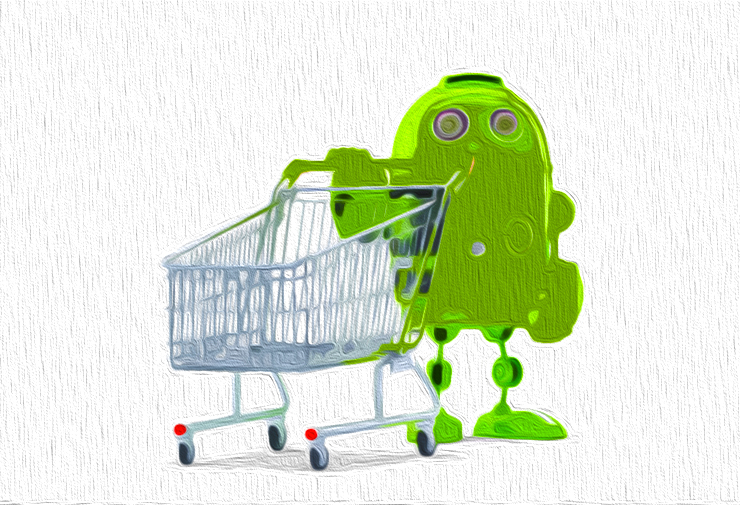"Content distribution" is a phrase that may seem mystifying to you. However, when it’s working well, it simplifies your content creation efforts.
One piece of high-quality content can work for you repeatedly by simply breaking it into 5–7 pieces and distributing it across several different marketing channels.
Here we’ll de-mystify content distribution, define what it is, best practices, and how to use some advanced content distribution strategies to get the most out of your marketing assets.
What Is Content Distribution?
Content distribution is the strategic process of sharing content across a variety of channels to reach a target audience.
At their best, content distribution strategies maximize the visibility and impact of your content.
Common types of content that can be distributed include:

- Email newsletters
- White papers
- Case studies
- Infographics
- Blog posts
- Podcasts
- Videos
It’s important to promote content across different channels and media formats to maximize reach and engagement.
Importance of Effective Content Distribution
Consistently creating high-quality content is a challenge on its own, but it’s only half the battle. After all, the most impressive content in the world won’t do your marketing goals any good if no one ever sees it.
This is why effective content distribution is so important. When done well, it increases brand awareness, solidifies brand authority, and boosts audience engagement.
Let’s take a closer look at how effective content distribution contributes to overall marketing ROI.
Brand Awareness: Collaborating with influencers or thought leaders and getting featured in their content, which is then shared on their platforms, can generate backlinks to your website, enhancing online visibility and brand awareness. Create a partnership proposal to get started on your first collaboration.
Brand Authority: Contributing expert opinions or insights to industry publications positions your brand as an authority in the field, resulting in media mentions that enhance credibility and expertise.

Audience Engagement: Launch user-generated content campaigns where your audience contributes content related to your brand, encourages social media shares, builds a community around your brand, and enhances engagement.
Types of Distribution Channels
There are three distinct categories of distribution channels — owned channels, earned or shared channels, and paid channels.
It’s important to understand the distinctions between each so you can build your content distribution strategy accordingly.
Owned Channels
These are platforms that your brand has control over, such as your official website, blog, and social media profiles. You have full ownership over your owned channels and your content, branding, and connection to your audience.
However, building and maintaining traffic and consistently having to produce high-quality content to keep them engaged is a challenge.
Earned/Shared Channels
Earned or shared channels involve leveraging third-party platforms or audiences to distribute content. This includes things like media coverage, influencer collaborations, and user-generated content.

The benefit is the potential for extended reach through established audiences you normally wouldn’t have access to. Challenges may arise over having less control.
For instance, becoming dependent on external factors you have no influence over and having to adhere to the values and requirements of third-party platforms.
Paid Channels
Paid channels involve investing in advertising to promote content. This includes social media ads, search engine marketing, and sponsored content. The advantages are immediate visibility and targeted reach.
Challenges include the expense, the need to optimize ad performance, monitor AdWords competitors, and ensure the content aligns seamlessly with platform and audience expectations.
It takes time to get dialed in, and paid channel distribution can get costly quickly as you experiment with what works.
Best Practices for Content Distribution Strategies
Your content distribution should be done strategically. Gone are the days when content distribution meant simply publishing a blog post and pasting its URL to your social media profiles.

If that’s still where you are in your content distribution strategy, that’s okay. It’s good that you’ve started somewhere.
But now is the time to start thinking strategically so you can start seeing some serious ROI for your efforts.
Here are seven best practices for building content distribution strategies.
Know Your Audience
Being too general is a death knell for a lot of content marketers. You have a general idea of your target audience and create content around what you think they’ll be interested in.
You may get lucky and strike gold with this approach. But it’s far more likely low traffic, low engagement, and few conversions will frustrate your attempts.
That’s why the first thing you need to do is create an audience persona.

An audience persona (also called a "buyer persona" or "customer profile") maps out your ideal customer.
It usually includes things like:
- Motivations
- Occupation
- Pain points
- Location
- Hobbies
- Gender
- Salary
- Age
Let’s take an example of creating personas for gamers.
Imagine ’Alex,’ someone who loves action-adventure games on PC. Alex is particularly captivated by unique game items, like Catwoman’s grappling claw pickaxe, which symbolizes agility and stealth in gameplay.
To map Alex’s customer journey, consider how she discovers new games, perhaps through Twitch streams or gaming forums, and her purchasing habits, like opting for complete game editions.
Understanding these details helps create targeted content, such as in-depth reviews of anticipated action-adventure games or features on legendary in-game items.
This approach ensures your content resonates with specific segments like Alex and her fellow gamers.
Next, dive into the pain points of your customers. What problems do they care the most about solving?
Use tools like:
Google Analytics – gives you insight into user behavior and who is viewing your content.
Glassbox – creates heatmaps and session replays around your website so you can see in real time what content your audience engages with.
Hubspot Analytics – gives you detailed reports across marketing channels by analyzing lead generation, customer interactions, and behaviors.
Once you’ve gathered this data about your audience’s demographics, interests, and behaviors, you can tailor your content to their needs.
Just as importantly, you’ll be able to make data-driven decisions about the best content distribution channels to focus on based on your persona research.
Understand the Content You Should Distribute First
To understand the content you should distribute, first, make a list of the types of content assets you already have. For example, take inventory of your blog posts, white papers, case studies, infographics, videos, and similar content.
Analyze the historical performance of each content type on the different channels they’re published on. Which has been the most effective?
Use this information to map out which content to distribute first.
For instance, if your short-form videos are performing the best, concentrate on distributing them to your email subscribers and as social media posts.
Choose the Right Channels for Maximum Reach and Visibility
Now that your historical content is working for you, you can turn your attention to choosing the best channels to maximize your visibility moving forward.
You’ll take the same approach with this as you did with your historical content.
Compile the data you’ve gathered from your audience behavior tools. See what your target audience is engaging with. Take note of the demographic they’re in.
If your audience is primarily 20–30 years old, using mobile devices, and engaging with your videos, you’ll want to choose to invest in short-form video content.
If your audience is middle-aged professionals who like your case studies, work on creating bite-sized statistics and analytics to share on LinkedIn and your email list.
Lastly, compare the benefits and drawbacks of paid and organic channels. You want to strike a healthy balance between the two for sustainable growth.
Putting all your eggs in one bucket is never the wisest course of action. However, you must keep your budget and business goals in mind when determining how much to invest in paid and organic channels.
Identify and Set Your Content Distribution KPIs and Goals
Speaking of business goals, you’ll want to map out the key steps for identifying and setting up your content distribution KPIs.
To work towards clear goals, determine relevant metrics and align them with your broader content marketing strategy.
Your goals and metrics should work together.
For instance, if your goal is greater brand awareness, set a metric that monitors brand mentions across media.
If your goal is greater email engagement, set a metric of higher open rates.
Create Engaging Content That Resonates With Your Audience
"Engaging content" doesn’t just mean writing with personality (though that does help).
In the context of marketing, "engaging content" means describing your buyer persona’s pain points, information preferences, and motivations. Then, positioning your product as the best solution.
To do this, it all goes back to the data.
With good data, you can create a good buyer persona. Your customer profile then serves as a guide to create content that’ll prompt your target audience to share, engage, and ultimately convert.
Create a Content Calendar
There are many ways to build a content calendar. To be the most effective, your content calendar should include:
- Who is responsible
- Marketing channel
- Distribution plan
- Due dates
- Format
Color coding is a wonderful way to help keep content calendars organized. There are many tools available to streamline building a content pipeline. Some of the best are Asana, Trello, Notion, and AirTable.

(Image Source)
In addition to an overall content calendar, you’ll need a social media management tool. These tools allow you to create, curate, and schedule posts months in advance and offer valuable analytical data to help you monitor engagement.
Buffer, Hootsuite, and SocialPilot are among the best and most popular. But research the best choice for the size and needs of your team.
Distribute Your Content and Tailor It to Each Platform
While the purpose of content distribution is to maximize the potential of each marketing asset, content isn’t necessarily one-size-fits-all.
For each distribution channel you’re working with, you need to understand its features and audience.
For instance, content on Instagram may thrive on visuals and concise captions, while LinkedIn favors professional insights and longer-form content.
If you try swapping the approach for either, you’re not going to see much engagement.
Because of this, be mindful when you’re adapting content for different platforms and industry-specific publications.
Tailoring your content will help increase engagement and overall reach, especially when distributing content for B2B and B2C companies.
5 Advanced Content Distribution Strategies
Once you have content distribution best practices to build on, you can turn your mind to more advanced strategies to reach your goals.
Here are five of the most important things to consider.
Measure, Analyze, and Optimize
Content creation and distribution alone aren’t enough to grow.
You must analyze your content distribution results by tracking website traffic, engagement, user behavior, and any other relevant KPIs.
Use these insights to determine which content resonates with your audience, which channels are most effective, and when your audience is most active.
The benefit of this data is invaluable as you refine your distribution strategy and create content that drives engagement and conversions.
Repurpose and recycle content
Get the most out of your high-performing content assets by repurposing them again and again.
Turn high-traffic blog posts into videos, infographics, or webinars that funnel your target audience through the buyer journey.
Recycle your current content library with updates and refreshes to stay current with your competition and avoid pouring more resources into creating brand-new content.
The challenge lies in maintaining quality while diversifying content offerings.
Expand Your Reach
Expanding your reach can be done in your owned channels by branching out to something you’re not already doing. For instance, starting a podcast or YouTube channel, beginning an email list, or starting to guest post on large industry blogs.
Shared channels can also be good here, using influencer connections or giving interviews to print publications to reach large, established audiences outside your normal reach.
Identifying the right channels, understanding new audience behaviors, and adapting content to resonate with different communities can cause some challenges. But if done successfully, they’ll expand your reach.
Invest More in Paid Channels
Double down on paid channels that have worked in the past or experiment with new ones. If you’ve never tried Instagram or Facebook Ads, try them. If Google Ads are new to you, get started there.
Paid channels can be an expensive money pit, but if you start small and are strategic, you’ll be able to grow sustainably and increase your reach.
Email Marketing
Email marketing is a popular channel because it is inexpensive to run and has a high return across industries. If email marketing isn’t part of your current content distribution plan, it absolutely should be.
Create or revamp a newsletter, offer valuable insights for your subscribers, and include shareable content to generate new leads with every issue.
Building and maintaining a healthy email list, creating engaging content, and monitoring results take time and effort, but the payoff is sky-high.
Frequently Asked Questions
What are the four functions of marketing?
Marketing is the art of creating demand for products and services.
It provides information about the organization's offerings and values, as well as how they impact customers' lives.
Marketing is also a way to stimulate interest and increase awareness about an offering. It can even drive action (or purchasing) when an invitation is issued.
Marketing can be divided into four functions.
- How to Create Demand – This is about building relationships and convincing potential buyers that your product or company has value.
- Stimulating Interest: This refers to increasing awareness among consumers about your product/service.
- Building Awareness – This refers ensuring that customers know about your product or services and are able to decide whether they want to buy them.
- Driving Action – This is the act of ensuring that consumers purchase your product or service after being made aware.
What is an example of search engine marketing?
Search Engine Marketing (SEM) is one of the most essential components of digital marketing. SEM encompasses paid-per click advertising, sponsored link, display ads (paid inclusion), search engine optimization(SEO), social marketing, video marketing and mobile advertising.
What are some direct marketing examples you can think of?
Direct Marketing Examples include postcards, brochures, flyers, e-mails, etc.
Direct marketing allows people to reach you at their homes or wherever they happen to be. It's the best way to communicate with customers who have already chosen your product or service over another brand.
You should know which message will appeal to your target market the most.
Finding out what your customers want is key to delivering it.
Direct marketing can be used to promote your business in many different ways. Direct marketing can be used to promote your business in many ways. You can send out catalogs to potential customers and advertise in local papers.
You can also create a mailing list that is unique to your customers. If you have good contacts, it is easy to add new subscribers.
Last but not least, ask existing customers if promotional materials are something they'd be interested in receiving. Many companies offer discounts for those who sign up to special offers.
What are the main types of marketing?
Marketing is the process of communicating ideas and values to consumers. Marketing is often used interchangeably with advertising. Marketing does not just include advertising. Marketing can include all communication methods that promote or market a product, service, or idea.
Three key components of marketing are branding, promotion and distribution. How a company is identified to its target audience is called branding. Promotion refers to attracting attention for your brand through paid advertising, promotions and other public relations activities. Distribution is how your message gets to your audience. Distribution can be done via traditional methods such as television, radio and print. But, the new technology has made it easier.
Statistics
- This allows us to deliver CPCs that are 80% less than average and CTRs 4-5 times higher than average. (marketinginsidergroup.com)
- Today, 81% of brands around the world have affiliate programs. (influencermarketinghub.com)
- In 2017, 34% of marketers cited co-branding as the most effective way to increase the number of email subscribers. (influencermarketinghub.com)
- From 2020 to 2022, eMarketer predicts that digital marketing will grow by 36% and take up 54% of marketing budgets! (marketinginsidergroup.com)
- Companies that use personalization are seeing revenue increases ranging from 6-10%. (blog.hubspot.com)
External Links
hubspot.com
influencermarketinghub.com
moz.com
- SEO Learning Center – Moz
- [Case Studies] How Moz ranked #1 for a high-volume Keyword in 3 Months or Less
statista.com
How To
20 Innovative Affiliate Marketing Techniques to Try in 2022
Affiliate marketing is a great way to make money online. This is one of the easiest ways you can get started. You must first sign up with an affiliate program like Commission Junction or ShareASale, then place links to your blog or website. The commission you receive when someone purchases from one of those links will earn you a commission.
Here are 20 affiliate marketing strategies to try in 2022:
- Create a Content Calendar
- Google Adwords
- Start your Podcast
- Join A Blogging Network
- Register Your Email Address
- Earn Cash for Reviews
- Get Influential
- Offer Free Trials
- Launch A Membership Site
- Amazon Sells Products
- Write Articles
- Start a YouTube Channel
- Host Events
- Develop A Mobile App
- Promote Your Business Online
- Run Facebook Ads
- Start A Twitter Account
- Increase Instagram Followers
- Customer Transparency is Key
- Increase your long-term earnings
————————————————————————————————————————————–
By: Joanne Camarce
Title: 5 Advanced Content Distribution Strategies and 7 Tips to Do It Right in 2024
Sourced From: blog.scoop.it/2024/05/09/5-advanced-content-distribution-strategies-and-7-tips-to-do-it-right-in-2024/
Published Date: Thu, 09 May 2024 16:00:00 +0000












